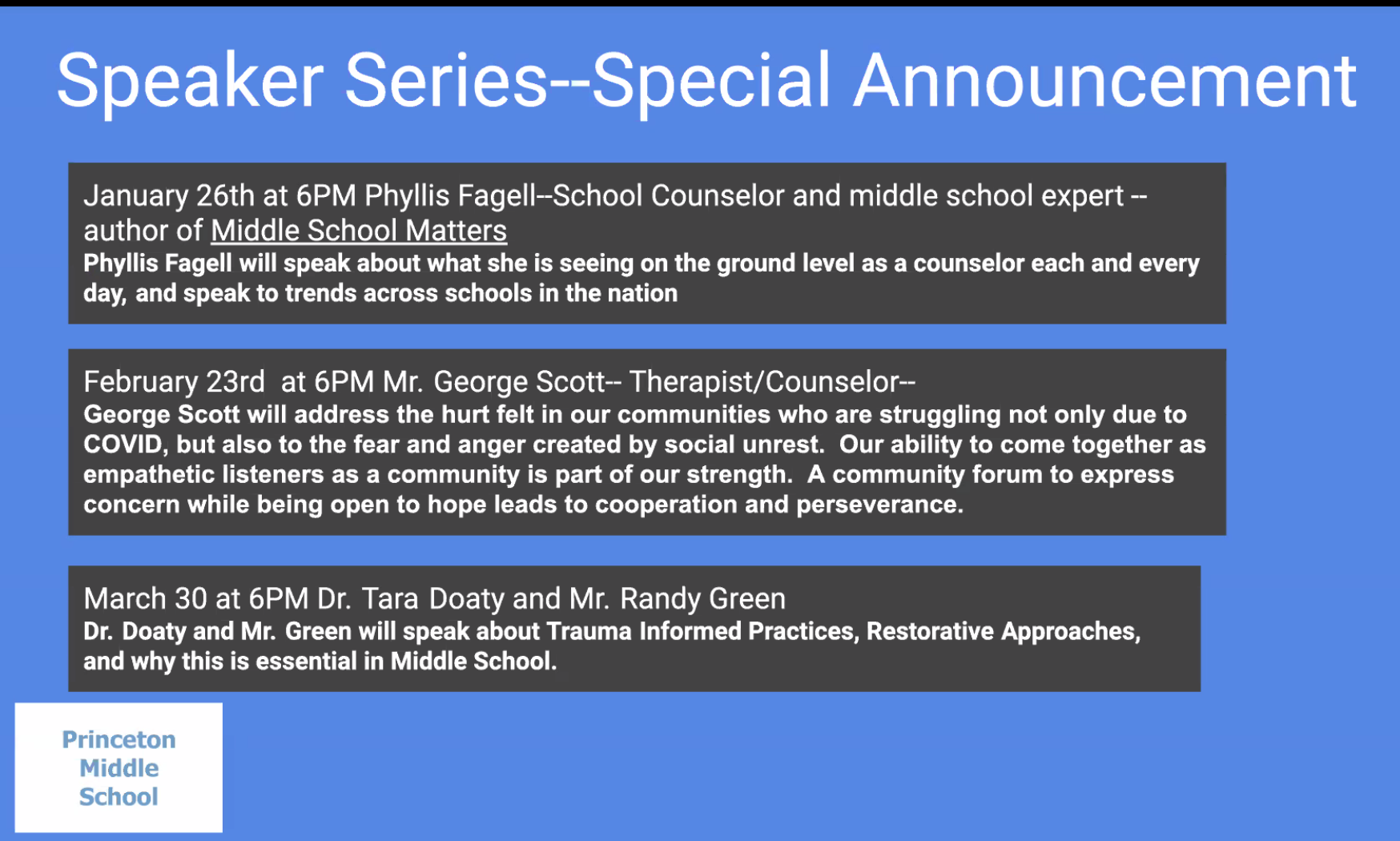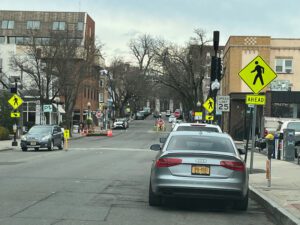 This street is closed…can’t turn there…traffic, traffic, everywhere! No matter where you try to go in Princeton these days, it seems more cars are on the road and road closures don’t make things any easier. Multiple construction projects are underway in and around downtown, with long term goals of creating better environments and infrastructures for enjoying town. Unfortunately, the projects, road closures and reduced parking, in the short term, can make life stressful and complicated. To provide you with a full understanding of what to expect, how you will be affected and what you can look forward to, Princeton Perspectives has the 4-1-1 on all of the changes.
This street is closed…can’t turn there…traffic, traffic, everywhere! No matter where you try to go in Princeton these days, it seems more cars are on the road and road closures don’t make things any easier. Multiple construction projects are underway in and around downtown, with long term goals of creating better environments and infrastructures for enjoying town. Unfortunately, the projects, road closures and reduced parking, in the short term, can make life stressful and complicated. To provide you with a full understanding of what to expect, how you will be affected and what you can look forward to, Princeton Perspectives has the 4-1-1 on all of the changes.
WITHERSPOON STREET REDESIGN
The on and off closures along Witherspoon Street from Nassau down to Spring Street have been the most noticeable and frequent lately, with more changes coming.
Princeton’s planning and engineering departments launched a master planning process to improve Witherspoon from Nassau to Valley Road back in October 2019, before COVID was on the radar. But the pandemic’s temporary changes to the area, to allow for more pedestrians, outdoor dining and retail spaces, had an impact on the desires and outcome for the final project.
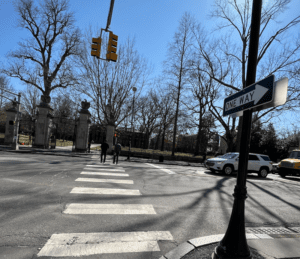 For pedestrians, the biggest change to come will be at the Nassau/Witherspoon traffic light. A project of the NJ DOT, the light will become fully actuated, which means a pedestrian must approach and push the signal for the light to change. Traffic along Nassau Street will flow uninterrupted unless and until someone pushes the button to cross. The standing areas on both sides of Nassau St. will also be bumped out, widening the sidewalk to shorten the pedestrian crossing area.
For pedestrians, the biggest change to come will be at the Nassau/Witherspoon traffic light. A project of the NJ DOT, the light will become fully actuated, which means a pedestrian must approach and push the signal for the light to change. Traffic along Nassau Street will flow uninterrupted unless and until someone pushes the button to cross. The standing areas on both sides of Nassau St. will also be bumped out, widening the sidewalk to shorten the pedestrian crossing area.
Since January, physical construction has been taking place on Witherspoon nearest Nassau St. with utility companies including Verizon Communications, NJ American Water, PSE&G and Crown Castle installing and connecting new and old systems. When the roadway project is complete, there will be a 5-year moratorium on digging up the road, so some of this work is in preparation for future expectations while some is to meet current needs.
Later this month, we’ll start to see physical construction of the sidewalks and roadway. Washington from Nassau to Spring Street is expected to be worked on first. The plan is to have one lane of traffic open throughout the construction, except for some short durations (hourslong, not days) where it is necessary to block vehicle passage. Pedestrian passageways will remain at all times.
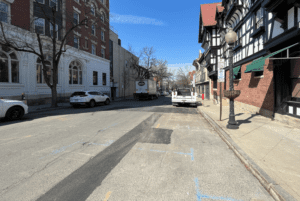 The goal here? To create a more walkable and comfortable outdoor/dining space by widening sidewalks to 18 feet, permanently changing Witherspoon to one-way vehicle traffic from Nassau to Spring Street, with one 12 ft. travel lane and a 10 ft. service lane on the western side of Witherspoon. Several, if not all, of the metered parking spots are likely to be removed.
The goal here? To create a more walkable and comfortable outdoor/dining space by widening sidewalks to 18 feet, permanently changing Witherspoon to one-way vehicle traffic from Nassau to Spring Street, with one 12 ft. travel lane and a 10 ft. service lane on the western side of Witherspoon. Several, if not all, of the metered parking spots are likely to be removed.
“There is adequate parking within the garages in town – Spring, Hulfish and Chambers,” explains Jim Purcell, Princeton Assistant Municipal Engineer. “Over the course of the last year we were able to open up some additional spaces knowing this project was coming. The garage typically had the top level closed and now it’s open to add capacity.”
Once this portion of Witherspoon is completed, construction will move to the area between Spring and Green Street, and when complete, two-way traffic will continue along that section of roadway. From Nassau to Green, Witherspoon Street will have urban trees planted, replacing the dying Bradford Pear trees that exist today.
Then, Phase 2 is expected to start. Not yet fully developed, the concept has been presented to the public and is on the municipal website alongside all of the improvement plans. Municipal leaders are still accepting community input on this phase until the presentation to Council on March 28th. This phase, from Green St. to just north of Franklin Road (at the bus stop in front of the Avalon Bay apartments) aims to better incorporate sidewalk and pedestrian considerations, on-street parking, bike lanes and more. There is hope the construction contract will be awarded for Phase 2 by the end of November and will begin work as Phase 1 is finishing up. Plans for Phase 3, Witherspoon from Franklin to Valley Road are still very fluid.
The tricky part of getting this work done is to continue to welcome residents and visitors to downtown Princeton, by keeping walkable and bikeable passageways open. As they try to make Princeton a more usable town, the center of town may best be avoided by vehicles in the meantime.
“If you’re coming to downtown to come to a restaurant, don’t try to drive down Witherspoon or Chambers. Go down Wiggins to the Spring St. garage – that’s our ideal,” explains Purcell. “If everyone stays away from the central business district in cars and works around to the garages, they can still enjoy Princeton.”
NEW HOTEL ON CHAMBERS ST.
If you plan to drive around to a garage, keep in mind Chambers Street (along the first block adjacent to Nassau) is also soon home to a new construction project. Though work on the Graduate Hotel has been taking place on the inside for a while, the outside work, and its effects on the public are about to be felt.
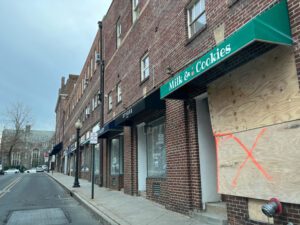 Chambers Street will soon be the crew’s work zone, with traffic shifting, sometimes going down to one lane and possibly times of full closure. The sidewalk at 2-4 Chambers St. and half of the roadway there will be primarily affected. Stores along Nassau St, including Sakrid, Milk & Cookies, Small Bites and Jammin’ Crepes, will remain in place and open to the public and the historic exterior of the building that rises above them will be preserved. But be prepared for scaffolding and a canopy to go up over the sidewalk as they do renovations on windows above.
Chambers Street will soon be the crew’s work zone, with traffic shifting, sometimes going down to one lane and possibly times of full closure. The sidewalk at 2-4 Chambers St. and half of the roadway there will be primarily affected. Stores along Nassau St, including Sakrid, Milk & Cookies, Small Bites and Jammin’ Crepes, will remain in place and open to the public and the historic exterior of the building that rises above them will be preserved. But be prepared for scaffolding and a canopy to go up over the sidewalk as they do renovations on windows above.
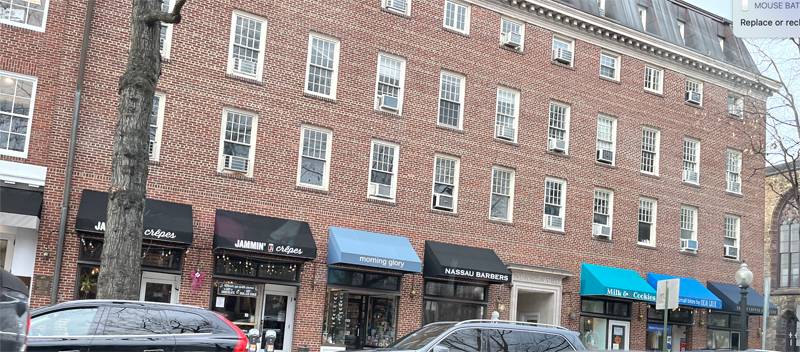 While 20 Nassau stays, the building portion at 2-4 Chambers St. is being torn down. The two will become one and turned into an approximately 180-room hotel with a lobby, grab-and-go café, eatery as well as an 80-space underground parking area for hotel use. The hotel is environmentally designed to a LEED Silver standard. Free bicycle rental is also expected for guests, as many are expected to be in town for the university.
While 20 Nassau stays, the building portion at 2-4 Chambers St. is being torn down. The two will become one and turned into an approximately 180-room hotel with a lobby, grab-and-go café, eatery as well as an 80-space underground parking area for hotel use. The hotel is environmentally designed to a LEED Silver standard. Free bicycle rental is also expected for guests, as many are expected to be in town for the university.
Keep in mind, COVID delayed this project and the physical exterior construction is just set to begin. It could potentially impact traffic until its projected opening date before graduation of 2024.
GRIGGS CORNER LOT GETS BUILT UP
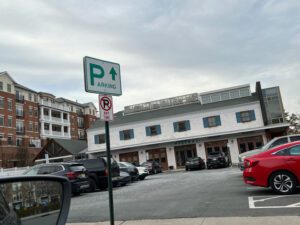 The downtown area is expected to get even busier this year with construction at the lot next to Mistral. Approvals have been granted, but unexpected delays are pushing back the May start date for construction of the metered parking lot at Hulfish and Witherspoon, which is to be renovated into a 3-story building. Known as Griggs Corner lot, (in recognition of the former Griggs Imperial Restaurant that once stood there) it will become home to 8 residential units with retail underneath.
The downtown area is expected to get even busier this year with construction at the lot next to Mistral. Approvals have been granted, but unexpected delays are pushing back the May start date for construction of the metered parking lot at Hulfish and Witherspoon, which is to be renovated into a 3-story building. Known as Griggs Corner lot, (in recognition of the former Griggs Imperial Restaurant that once stood there) it will become home to 8 residential units with retail underneath.
Five 1-bedroom and three 2-bedroom units are expected, with courtyard space and a common roof with private open space. This design is also expected to include vegetative roof areas, using native plants.
For its tenants, 32 parking spaces will be provided at the Hulfish and Chambers St. garages, but it is important to note the building site will additionally eliminate 24 metered spots from the public use.
EXPANSION OF CELLULAR SERVICE
While you’re driving around trying to get to your parking destination or walking to enjoy downtown, it may be helpful to know that Verizon is upgrading its wireless network in and around Princeton. And, if you’ve ever said, “Sorry, I lost you!” while passing through some of Princeton’s notorious dead zones, you are likely to appreciate the upgrade.
 With the expansion of 5G, to accommodate increased usage by customers and a desire to enable download of larger files, its estimated 10 small cell sites will be added in Princeton by Verizon that, in conjunction with its other technologies, intend to improve experiences for everyone.
With the expansion of 5G, to accommodate increased usage by customers and a desire to enable download of larger files, its estimated 10 small cell sites will be added in Princeton by Verizon that, in conjunction with its other technologies, intend to improve experiences for everyone.
“If you’re using a highway as an analogy, the small cells are expanding the number of lanes,” explains Andy Choi, Communications Manager for Verizon. “If you’re stuck in traffic, it’s a lot of cars trying to get to one place with a limited # of lanes. If you expand 1 or 2 more lanes, more traffic will get through at a faster rate. Here we’re providing more lanes for data to transfer back and forth between what you’re downloading, sending, consuming.”
You likely won’t notice the small cell nodes, as Verizon attempts to blend them into our existing infrastructure by matching the color of nearby poles or camouflaging them into their environment. Overall, small cell additions to Princeton should provide a stronger connection.
“Princeton is one of many communities we’re looking to help upgrade and connect. As we become more and more dependent on our mobile networks, whether at home, on the go, on laptops or mobile devices, we know how important it is to stay connected,” adds Choi.
While underway, each of the above projects may be a hindrance or inconvenience to your enjoyability of downtown Princeton. Despite the removal of several parking spots, Princeton’s engineering department reviewed parking analysis for each project and anticipates there will be enough parking to accommodate all who need it. Once complete, it is expected these projects will help build a more vibrant, walkable and connected town. During construction, all are likely to vary regularly with regards to their impact on traffic and the community. To know the latest, you can sign up to receive email or text alerts by going to the municipality’s Notify Me page and choosing the alerts you want to receive.
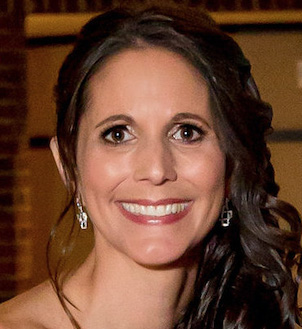
Lisa Jacknow spent years working in national and local news in and around New York City before moving to Princeton. Working as both a TV producer and news reporter, Lisa came to this area to focus on the local news of Mercer County at WZBN-TV. In recent years, she got immersed in the Princeton community by serving leadership roles at local schools in addition to volunteering for other local non-profits. In her free time, Lisa loves to spend time with her family, play tennis, sing and play the piano. A graduate of the S. I. Newhouse School of Public Communications at Syracuse University, Lisa was raised just north of Boston, Massachusetts but has lived in the tri-state area since college. She is excited to be Editor and head writer for Princeton Perspectives!
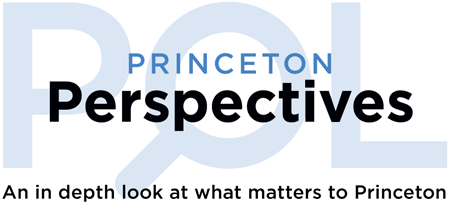
 There’s a reason people choose to live in Princeton as opposed to some of the neighboring towns. Besides its highly rated schools, the walkability and vibrancy of town is another strong attraction. Therefore, many would argue that keeping the business community strong and providing opportunities for it to be even stronger and more vibrant would benefit both businesses and residents alike. However, there has been much debate about how to best make this happen.
There’s a reason people choose to live in Princeton as opposed to some of the neighboring towns. Besides its highly rated schools, the walkability and vibrancy of town is another strong attraction. Therefore, many would argue that keeping the business community strong and providing opportunities for it to be even stronger and more vibrant would benefit both businesses and residents alike. However, there has been much debate about how to best make this happen.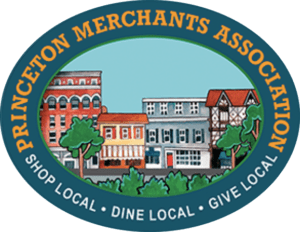 For decades, there have been talks amongst the business community, and under the guidance of the all-volunteer
For decades, there have been talks amongst the business community, and under the guidance of the all-volunteer 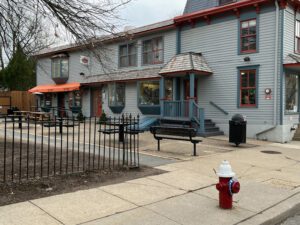 “That’s been an old aspiration of many local entrepreneurs and city leaders. The pandemic has accelerated the need of forming a private corporation with the participation of local authorities to accomplish many tasks oriented to have a better Princeton, for both property and business owners, as well as for residents,” shares Omar Delgado, owner of
“That’s been an old aspiration of many local entrepreneurs and city leaders. The pandemic has accelerated the need of forming a private corporation with the participation of local authorities to accomplish many tasks oriented to have a better Princeton, for both property and business owners, as well as for residents,” shares Omar Delgado, owner of  “Perhaps downtown Princeton is not dilapidated, but it certainly needs improvement, and the current methods are not doing the job,” believes Bill Hare, owner of a property at Nassau & Witherspoon that currently houses
“Perhaps downtown Princeton is not dilapidated, but it certainly needs improvement, and the current methods are not doing the job,” believes Bill Hare, owner of a property at Nassau & Witherspoon that currently houses 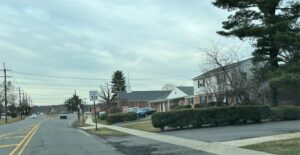 But the community has not all been in agreement. Nearly a dozen property and business owners also called in on Feb. 28th and shared a desire to postpone or stop the vote, citing concerns of how the benefits would outweigh the cost, notably with how far reaching the SID is with regards to some of the businesses it’s chosen to include.
But the community has not all been in agreement. Nearly a dozen property and business owners also called in on Feb. 28th and shared a desire to postpone or stop the vote, citing concerns of how the benefits would outweigh the cost, notably with how far reaching the SID is with regards to some of the businesses it’s chosen to include.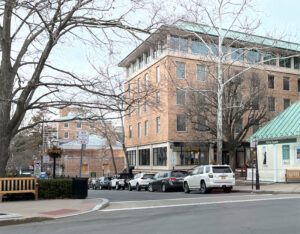 Palmer Square tenants, because they already pay into promotional funding provided by
Palmer Square tenants, because they already pay into promotional funding provided by 
 Love can spark when two people are at the right place at the right time. When that occurs in Princeton, a town where people often come and stay forever, it is the perfect recipe for a lifetime romance. Such is the case in the following three Princeton-made love stories:
Love can spark when two people are at the right place at the right time. When that occurs in Princeton, a town where people often come and stay forever, it is the perfect recipe for a lifetime romance. Such is the case in the following three Princeton-made love stories: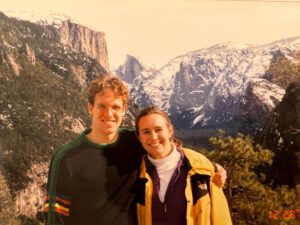 Though official statistics have not been recorded, it’s been said that 50% or more of Princeton University undergraduates marry each other. Heather Harnly and Greg Hughes contribute to this beautiful statistic.
Though official statistics have not been recorded, it’s been said that 50% or more of Princeton University undergraduates marry each other. Heather Harnly and Greg Hughes contribute to this beautiful statistic.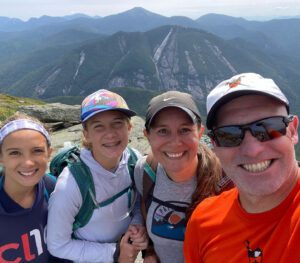 “Growing up out west, I loved it because it is so beautiful, but I’ve never felt a sense of community like I feel here,” Greg explains. “On the west coast, everyone is outwardly nice, they smile and wave, but you don’t get to know them. Here, there’s a gruff exterior, but people will drop everything to help you out. It’s really sucked me in. It’s a pretty special town.”
“Growing up out west, I loved it because it is so beautiful, but I’ve never felt a sense of community like I feel here,” Greg explains. “On the west coast, everyone is outwardly nice, they smile and wave, but you don’t get to know them. Here, there’s a gruff exterior, but people will drop everything to help you out. It’s really sucked me in. It’s a pretty special town.”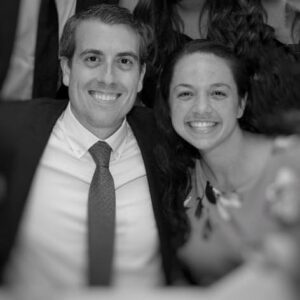 And the middle school in Princeton is where our next love story began. Of the 336 teachers working at Princeton Public Schools, only two fell in love after bonding over 7th grade Social Studies. It’s true! Andrea first met Jonathan Hunt when she came for an interview and was asked to teach a lesson to his World Cultures and Geography class at John Witherspoon Middle School (now, Princeton Middle School).
And the middle school in Princeton is where our next love story began. Of the 336 teachers working at Princeton Public Schools, only two fell in love after bonding over 7th grade Social Studies. It’s true! Andrea first met Jonathan Hunt when she came for an interview and was asked to teach a lesson to his World Cultures and Geography class at John Witherspoon Middle School (now, Princeton Middle School).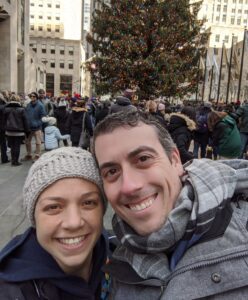 “Life is mostly focused on the kids and caring for them. Any down time we have is spent playing with the kids, building castles, running around outside, or figuring out a fun craft they can make and display around the house,” Andrea adds.
“Life is mostly focused on the kids and caring for them. Any down time we have is spent playing with the kids, building castles, running around outside, or figuring out a fun craft they can make and display around the house,” Andrea adds. Laughter, an important key to long-term relationships. That’s what Rhona says has kept her in love with Allen over nearly 54 years of marriage. Well, laugher and so much more.
Laughter, an important key to long-term relationships. That’s what Rhona says has kept her in love with Allen over nearly 54 years of marriage. Well, laugher and so much more.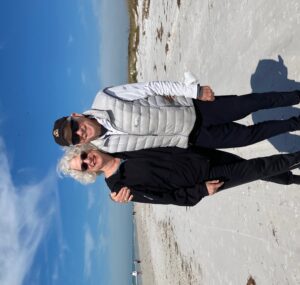 Rhona and Allen dated for the next several months and were engaged by the end of 1967. They married near Rhona’s hometown in northern NJ in June 1968 and then returned to and remained in Princeton. By 1970 they had their first of two daughters and were entrenched in the local community. Allen had joined a local law practice and became the Princeton Planning Board attorney for over 40 years. During that time, he also joined the boards of several local nonprofits including at the Library, Princeton Area Community Foundation and The Jewish Center. Rhona returned to school and got her MSW, which led to her working at Princeton Family Service and then at Elm Court. She worked for Princeton University admissions, joined The Jewish Center Board and performs with OnStage around the community. The Porters bought an apartment in New York City 12 years ago, but their primary home remains here.
Rhona and Allen dated for the next several months and were engaged by the end of 1967. They married near Rhona’s hometown in northern NJ in June 1968 and then returned to and remained in Princeton. By 1970 they had their first of two daughters and were entrenched in the local community. Allen had joined a local law practice and became the Princeton Planning Board attorney for over 40 years. During that time, he also joined the boards of several local nonprofits including at the Library, Princeton Area Community Foundation and The Jewish Center. Rhona returned to school and got her MSW, which led to her working at Princeton Family Service and then at Elm Court. She worked for Princeton University admissions, joined The Jewish Center Board and performs with OnStage around the community. The Porters bought an apartment in New York City 12 years ago, but their primary home remains here.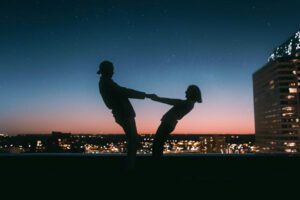 The pandemic has certainly affected every facet of our lives…and there’s no doubt that it has taken a toll on romanticism. Whether it’s the fact that many couples are spending so much time together at home (working from home, etc.) or masking/unmasking has kept you from enjoying some of your traditionally favorite activities together, it’s time to get back in the game! Valentine’s Day may have passed, but there are 364 other days in the year to get out and enjoy time together. Despite all the ups and downs of the past two years, I’m happy to report there are a variety of things you can safely do around Princeton to reignite that spark, keep things burning or simply get out of your house with someone you care about.
The pandemic has certainly affected every facet of our lives…and there’s no doubt that it has taken a toll on romanticism. Whether it’s the fact that many couples are spending so much time together at home (working from home, etc.) or masking/unmasking has kept you from enjoying some of your traditionally favorite activities together, it’s time to get back in the game! Valentine’s Day may have passed, but there are 364 other days in the year to get out and enjoy time together. Despite all the ups and downs of the past two years, I’m happy to report there are a variety of things you can safely do around Princeton to reignite that spark, keep things burning or simply get out of your house with someone you care about.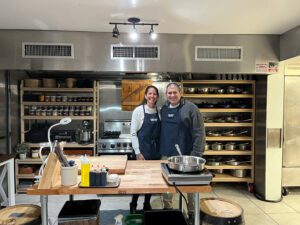 My son recently said to me, “Oh, you and dad are actually going out tonight?” Ouch! The comment was referring to our spending many a weekend night on our couch recently rather than at a restaurant or out with friends, because the frigid temperatures and Omicron surge were keeping us home. But a last-minute invitation to try out a new cooking school got us off the couch and provided a much-needed date night!
My son recently said to me, “Oh, you and dad are actually going out tonight?” Ouch! The comment was referring to our spending many a weekend night on our couch recently rather than at a restaurant or out with friends, because the frigid temperatures and Omicron surge were keeping us home. But a last-minute invitation to try out a new cooking school got us off the couch and provided a much-needed date night!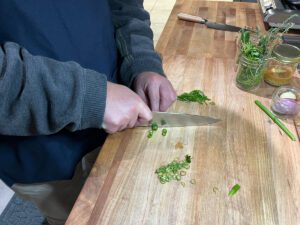 And we felt the love. First, there’s the passion Alex has about everything cooking-related, and you can feel it when he shows you things as simple (or so you thought) as how to properly chop a vegetable. Then, there’s the relationship he has with farm, fresh and local ingredients which you see as he demonstrates how to use not just the florets, but the leaves and stems of a cauliflower. We opted for a vegetarian menu, but varieties of classes are offered including for meat-eaters, those desiring knife skills, for picky eaters, with exotic menus or meant for everyday cooking.
And we felt the love. First, there’s the passion Alex has about everything cooking-related, and you can feel it when he shows you things as simple (or so you thought) as how to properly chop a vegetable. Then, there’s the relationship he has with farm, fresh and local ingredients which you see as he demonstrates how to use not just the florets, but the leaves and stems of a cauliflower. We opted for a vegetarian menu, but varieties of classes are offered including for meat-eaters, those desiring knife skills, for picky eaters, with exotic menus or meant for everyday cooking. The cooking school is currently housed in the Red Barn Milk Company up Route 31, just north of Hopewell. COVID precautions are taken, and each class has a max of 12 students. If you prefer a more personal opportunity, you can opt for a private lesson like we had. The class is really hands on, and the food combinations you create are delicious. Cooking together is something most couples rarely do, and it really makes for a fun time. And I’ll add, yesterday, when I walked into the house to the smell of butter and thyme (my husband was trying to recreate the croutons we made in class) it triggered great emotions! If you simply can’t envision cooking with your spouse – go with a friend!
The cooking school is currently housed in the Red Barn Milk Company up Route 31, just north of Hopewell. COVID precautions are taken, and each class has a max of 12 students. If you prefer a more personal opportunity, you can opt for a private lesson like we had. The class is really hands on, and the food combinations you create are delicious. Cooking together is something most couples rarely do, and it really makes for a fun time. And I’ll add, yesterday, when I walked into the house to the smell of butter and thyme (my husband was trying to recreate the croutons we made in class) it triggered great emotions! If you simply can’t envision cooking with your spouse – go with a friend! Another place you could go together to feel the love is
Another place you could go together to feel the love is 
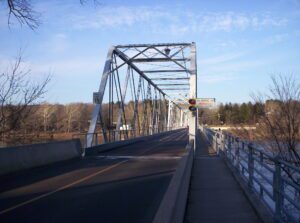 If you don’t have a fear of heights, you can strengthen your commitment to your partner by walking together over a bridge! The
If you don’t have a fear of heights, you can strengthen your commitment to your partner by walking together over a bridge! The 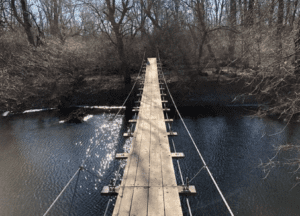 A second bridge you could romantically enjoy together is the Swinging Bridge over the Stony Brook in Institute Woods. Use
A second bridge you could romantically enjoy together is the Swinging Bridge over the Stony Brook in Institute Woods. Use 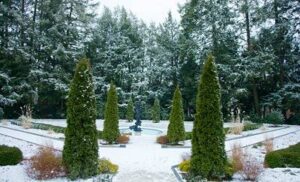
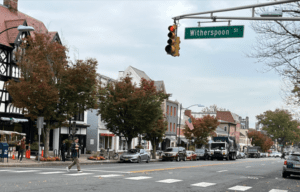 Mahatma Gandhi once said, “The future depends on what you do today.” And with so many things going on in our lives and around Princeton, Princeton Perspectives sought to answer: Princeton’s Leaders: Are They Creating a Better Tomorrow?
Mahatma Gandhi once said, “The future depends on what you do today.” And with so many things going on in our lives and around Princeton, Princeton Perspectives sought to answer: Princeton’s Leaders: Are They Creating a Better Tomorrow?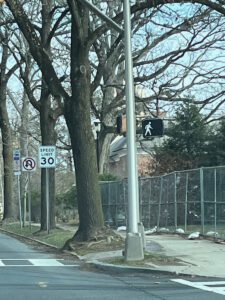 As a child, we’re all taught to look left-right-left before crossing the street. Crosswalks were created to give pedestrians a place where they have the right of way and signals have been installed to inform pedestrians when it’s their turn to safely walk. Yet, despite all of these safety measures, there were 22 accidents in Princeton last year that involved cars hitting pedestrians, with victims ranging in age from 5 to 85.
As a child, we’re all taught to look left-right-left before crossing the street. Crosswalks were created to give pedestrians a place where they have the right of way and signals have been installed to inform pedestrians when it’s their turn to safely walk. Yet, despite all of these safety measures, there were 22 accidents in Princeton last year that involved cars hitting pedestrians, with victims ranging in age from 5 to 85.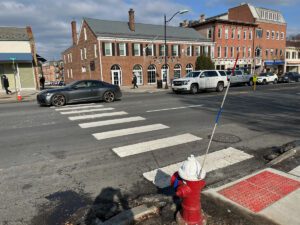 “Crosswalks invite pedestrians to walk there, that’s why most accidents happen there. Pedestrians are too quick to assume a crosswalk will protect them and while legally a car must stop, the motorist has to see there’s a pedestrian first,” explains Sergeant Thomas Murray,
“Crosswalks invite pedestrians to walk there, that’s why most accidents happen there. Pedestrians are too quick to assume a crosswalk will protect them and while legally a car must stop, the motorist has to see there’s a pedestrian first,” explains Sergeant Thomas Murray,  Another thing that 2020 brought with it was a change in attitude towards the police. Whereas in 2016 the Street Smart campaign had police interacting with 100s of locals to educate them about roadway safety, the
Another thing that 2020 brought with it was a change in attitude towards the police. Whereas in 2016 the Street Smart campaign had police interacting with 100s of locals to educate them about roadway safety, the 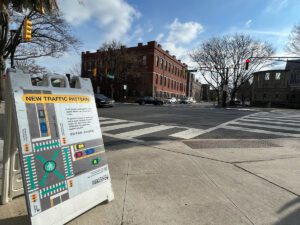 An immediate push was made to create a safer intersection and a few years later, after Princeton approached the state, providing research and going through a thorough review, an All Pedestrian Phase adjustment was made at this busy Nassau/Washington intersection. This means that cars at all four intersecting roadways stop at the same time, allowing pedestrians to cross in all directions simultaneously without the possibility of oncoming traffic.
An immediate push was made to create a safer intersection and a few years later, after Princeton approached the state, providing research and going through a thorough review, an All Pedestrian Phase adjustment was made at this busy Nassau/Washington intersection. This means that cars at all four intersecting roadways stop at the same time, allowing pedestrians to cross in all directions simultaneously without the possibility of oncoming traffic.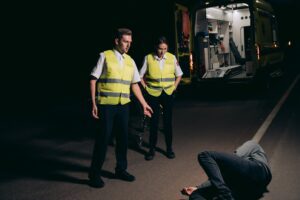 “Vision Zero begins with the premise that traffic deaths and serious injuries are preventable, and our existing techniques can be used to design for better outcomes. The US DOT’s Federal Highway Administration supports Vision Zero as part of its commitment to safety,” details Lisa Serieyssol, a member of the task force and past chair of the Pedestrian & Bicycle Advisory Committee who helped to bring Vision Zero into Princeton.
“Vision Zero begins with the premise that traffic deaths and serious injuries are preventable, and our existing techniques can be used to design for better outcomes. The US DOT’s Federal Highway Administration supports Vision Zero as part of its commitment to safety,” details Lisa Serieyssol, a member of the task force and past chair of the Pedestrian & Bicycle Advisory Committee who helped to bring Vision Zero into Princeton.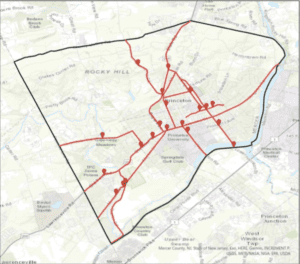
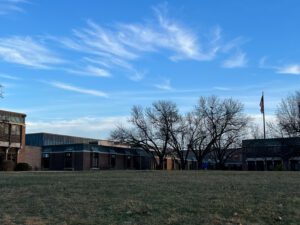 COVID-19. Delta. Omicron. The virus that just goes on and on and on has taken its toll on our community in so many ways. In an attempt to stop the spread back in March 2020, we all recall when Princeton Public Schools (PPS) and others went fully remote for the remainder of the school year. The next fall PPS remained remote until an every-other-week schedule began in-person at
COVID-19. Delta. Omicron. The virus that just goes on and on and on has taken its toll on our community in so many ways. In an attempt to stop the spread back in March 2020, we all recall when Princeton Public Schools (PPS) and others went fully remote for the remainder of the school year. The next fall PPS remained remote until an every-other-week schedule began in-person at 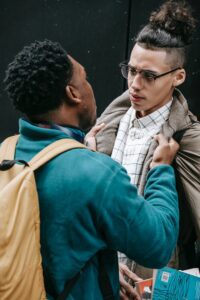 From October through December 2021, PMS reported 10 investigations, comprised of 4 Harassment, Intimidation, Bullying (HIB) incidents and 6 other alleged offenses that didn’t fall under HIB. HIB is the policy used to cover more targeted and intentional incidents, not necessarily inclusive of a slug in the arm or some other inappropriate behaviors. As explained on the district website, HIB ensures incidents get a thorough investigation, and as the
From October through December 2021, PMS reported 10 investigations, comprised of 4 Harassment, Intimidation, Bullying (HIB) incidents and 6 other alleged offenses that didn’t fall under HIB. HIB is the policy used to cover more targeted and intentional incidents, not necessarily inclusive of a slug in the arm or some other inappropriate behaviors. As explained on the district website, HIB ensures incidents get a thorough investigation, and as the 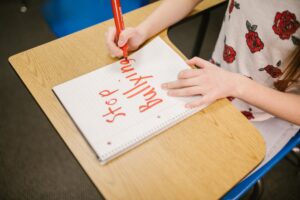 “The kid doing bullying is bigger, stronger, or more socially powerful, or it’s a group of kids picking on one kid. That power difference, that’s what makes it difficult or impossible for the kid being targeted to protect or defend themselves. For actual bullying, we need adults to step in and say that’s crossing the line. A lot of times, kids do bad behavior and it’s not bullying, it’s a clumsy effort to handle conflict or its poor emotion regulation skills, and that’s very different,” shares
“The kid doing bullying is bigger, stronger, or more socially powerful, or it’s a group of kids picking on one kid. That power difference, that’s what makes it difficult or impossible for the kid being targeted to protect or defend themselves. For actual bullying, we need adults to step in and say that’s crossing the line. A lot of times, kids do bad behavior and it’s not bullying, it’s a clumsy effort to handle conflict or its poor emotion regulation skills, and that’s very different,” shares  So, was the mental and social fallout of the pandemic leading to behavioral problems at PMS or was it a series of robust physical interactions gone awry? To respond to parental concern the previously referenced December 9th meeting was called with parents, to discuss the school environment, what was going on and what is being done.
So, was the mental and social fallout of the pandemic leading to behavioral problems at PMS or was it a series of robust physical interactions gone awry? To respond to parental concern the previously referenced December 9th meeting was called with parents, to discuss the school environment, what was going on and what is being done.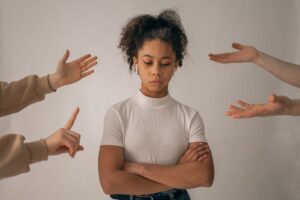 The district says it is being intentional in dealing with each individual situation. Some, like Titiunik, weren’t feeling enough was being done in response to her daughter’s situation and her petition led to a meeting with PPS Superintendent Dr. Carole Kelley and Principal Burr. She pushed for changes including a request for schools to be more transparent and communicative in detailing events or incidents and feels she’s already seen improvements in the emails. But Titiunik also feels the specifics of incidents can affect the outcomes.
The district says it is being intentional in dealing with each individual situation. Some, like Titiunik, weren’t feeling enough was being done in response to her daughter’s situation and her petition led to a meeting with PPS Superintendent Dr. Carole Kelley and Principal Burr. She pushed for changes including a request for schools to be more transparent and communicative in detailing events or incidents and feels she’s already seen improvements in the emails. But Titiunik also feels the specifics of incidents can affect the outcomes.